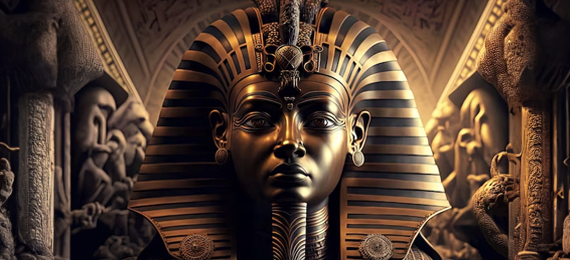
Mummies, coffins, pyramids, deserts, temples, gods, and gigantic statues stand gallantly, narrating the ancient and most prosperous civilization of Egypt. These objects not only portray history but also surprise everyone with innovative ideas the ancient people had without any technological advancements. Besides artifacts and monuments, Egypt is famous for its significant kings and Queens; to be honest, the land itself is a kingmaker. Tutankhamun–a boy king who ruled only for a short duration but left a huge impact on Egyptian history.
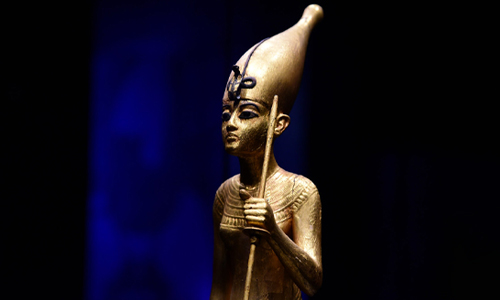
Who Is King Tut?
The ancient ruler Pharaoh Tutankhamun Nebkheperure ruled ancient Egypt from the age of nine in the time period 1333 to 1323 B.C. Tut’s actual birth name was Tutankhaten, where the last two syllables honored the sun god. He changed his name after becoming king.
How old was Tutankhamun when became a king?
- A. Six years
- B. Seven years
- C. Eight years
- D. Nine years
After the death of his father Akhenaten, who believed everyone had to worship one god, SUN, called Aten, instead of the 2000 gods they believed in. Tut didn’t rule for many years, as he died at the age of 19. The reason for death is unknown.
King Tut’s tomb discovery
The tomb of Tutankhamun was discovered by evacuators led by Egyptologist Howard Carter in the Valley of the Kings in 1922. To their despair, most of the pharaoh’s tombs were stolen in ancient times. Whereas Tut’s tomb was hidden and covered with natural stones and debris, allowing it not to get robbed these many years. Hence it was the first largely intact royal burial from the ancient Egyptian era.
Tut’s Tomb secret chamber
There was great speculation for many years among archaeologists that the hidden hieroglyphics would lead to the discovery of a secret chamber adjacent to Tut’s tomb. It was anticipated that the fabled beautiful Egyptian Queen Nefertiti’s last remaining body lies in a hidden chamber near King Tut’s tomb.
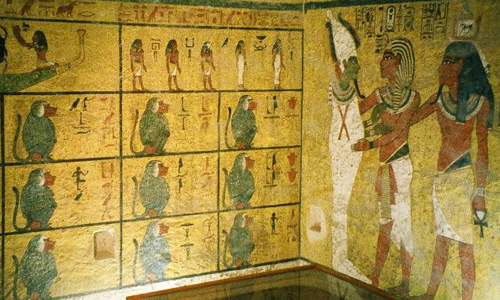
Nicholas Reeves from the British Museum’s Department of Egyptian Antiquities said, “Close inspection of Ay’s cartouches reveals clear, underlying traces of an earlier name – that of Tutankhamun. In its original version, this scene had shown Tutankhamun performing the funerary ritual for the tomb’s original owner, his immediate predecessor … Nefertiti.”
He doubted that the unexpected death of the young pharaoh king in 1324 BC, at the age of 19, made the people bury the king’s body immediately. Hence, according to Reeves King Tut’s tomb is an outer section covering a much larger tomb preserving his predecessor ‘Nefertiti.’
The studies including thermal imaging and mold-growth analysis seemed to support Reeves’s point of view. He wrote in his book The Complete Tutankhamun, “Far from Tutankhamun having been buried in the expanded, unused tomb of a private individual, it looks very much as if he was merely an interloper within the outer section of a significantly larger, queenly tomb … An unusual state of affairs this may seem, but in fact, the arrangement is far from unique.”
Tutankhamun’s Mask
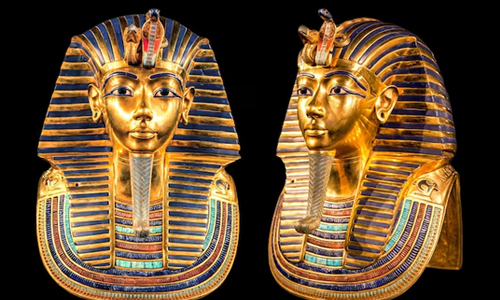
Tut’s mask is a masterpiece among all other artifacts. Every bit of the mask reveals the royalty of civilization. Sculpted with solid gold, the funeral mask was identified in the tomb of King Tutankhamun in the Valley of Kings, Egypt. Standing at 54 inches in height, the mask weighs around 11kg. Scientists assumed that the mask might have been fashioned during the New Kingdom period.
The mask is still praised for its phenomenal meticulous craftsmanship. Along with solid gold, it is weaved with precious stones such as Lapis lazuli and turquoise, to highlight the facial features of the King. His head was covered with a striped golden cloth featuring a vulture and a cobra symbolizing upper and lower Egypt.
According to the Egyptians, masking the Pharaoh’s face would keep them safe in their afterlife. Now, this mask is placed in the Egyptian Museum in Cairo.
Unsolved Mystery of Tut’s Death
The 18-year-old king ruled no more than a decade as he died young. However, his crypt was discovered in 1922 by archeologist Howard Carter. Following the discovery, Carter searched for Tut’s tomb for 2 years and successfully found it in another space in the tomb. When Carter opened the tomb he found two more tombs and the third one was crafted with gold. Inside lies the 3000-year-old mummified body of Tut.
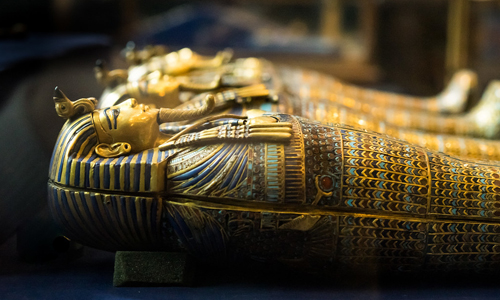
After the excavation, the archeologists conducted extensive research on King Tut’s tomb Plenty of theories have been rendered. Some say the king might have murdered or poisoned. But when the scientists scanned the mummy, it showed Tut was sick and his leg was deformed. The DNA analysis revealed that the king might have been infected with Malaria. Based on the CT scan, the scientists suggested the king perhaps had a bone disorder called Köhler disease which might have caused the broken leg. Another theory says he got his leg broken as a result of falling from his chariot which was kept inside his tomb.
End of controversy
The analysis conducted by the National Geographic Society and led by Franco Porcelli from the University of Turin put an end to the controversial theory about the Tomb. A Radar scan by Hirokatsu Watanabe in November 2015 showed two areas were empty. The empty chambers were assumed to be present behind the paintings of the main chamber that depicts the burial rituals.
The second radar scan conducted by the National Geographic Society in April 2016 contradicted the first findings. The long-time study ended with a statement, “We conclude, with a very high level of confidence, that the hypothesis concerning the existence of hidden chambers adjacent [to] Tutankhamun’s tomb is not supported by the [ground-penetrating radar] data.”
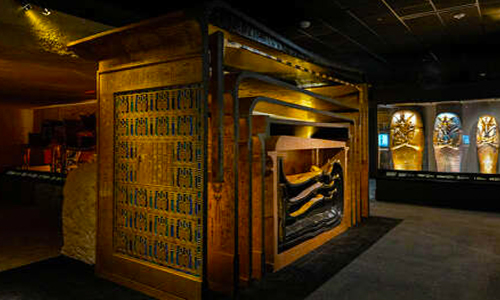
The architecture of King Tut’s tomb
The tomb consists of four chambers along with an entrance staircase and passageway. The four rooms are the antechamber, burial chamber, annex, and treasury. Carter entered first in the antechamber which included three funeral beds and four chariots. King Tut’s mummy was preserved in three nested coffins inside the royal sarcophagus. The last one was a gold coffin. Egyptologists found statues and a chest with objects In the treasury. They also found an annex chamber filled with oils, dishes, and games.
Some interesting Facts about King Tut’s tomb
- King Tut’s birth name was Tutankhaten, inspired by the sun god.
- Tutankhamun became the youngest king of the Pharaoh dynasty at the age of nine.
- King Tut died when he was 19 years old.
- Egyptologist Lord Carnarvon’s mysterious death in April 1923 led to speculation that it was because of the curse of the Pharaohs.
- Tut’s coffin was a three-piece sarcophagus covered with red quartzite from the exterior and the interior with 110 kilograms of solid gold.
- The Pharaoh king had a gold funeral mask inlaid with lapis lazuli(blue metamorphic stones). The eyes were made up of quartz and obsidian.
- Tutankhamun’s tomb is the first and only royal intact tomb to be discovered in the Valley of the Kings. More than 5,000 antique articles surrounded the coffin.
- Carter took 10 years to explore the tomb and analyzed all the thousands of royal goods that were excavated from the tomb.
- The designation KV62 stands for Valley of the Kings and the number ‘62’ shows the 62nd tomb discovered.
- The treasures found are displayed at the Egyptian Museum in Cairo, Egypt.
Also, check out this blog to learn about the influential people who got erased from history.